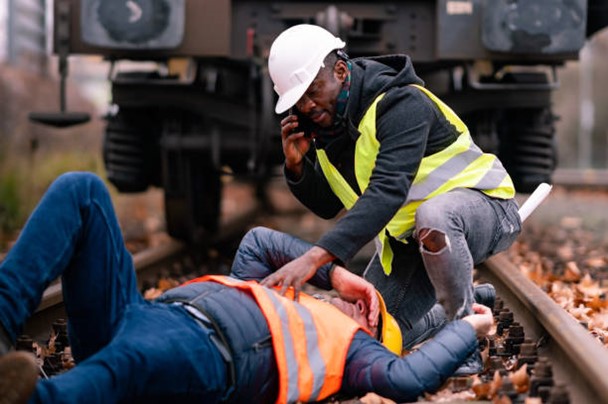
Working on the railroad remains one of the most dangerous jobs in America. Between moving equipment, heavy machinery, and exposure to hazardous materials, the risk of injury is substantial. When accidents occur, the consequences can be devastating—physically, emotionally, and financially.
Fortunately, railroad workers have unique legal protections that differ from traditional workers’ compensation laws. If you’ve been injured on the job, it’s critical to understand your rights under the Federal Employers Liability Act (FELA) and how you can pursue the compensation you deserve.
What Is FELA?
The Federal Employers Liability Act (FELA) was enacted in 1908 to protect and compensate railroad workers injured on the job due to employer negligence. Unlike regular workers’ comp claims, FELA requires the injured worker to prove that the railroad company was at least partially at fault.
This allows for potentially greater financial recovery, including:
- Medical bills (past and future)
- Lost income and diminished earning capacity
- Pain and suffering
- Emotional distress
- Loss of enjoyment of life
Common Causes of Railroad Worker Injuries
Railroad companies are responsible for providing a reasonably safe workplace. When they fail to do so, serious injuries or fatalities can occur. Some common examples of negligence include:
- Inadequate training or supervision
- Unsafe tools or equipment
- Poorly maintained tracks or facilities
- Exposure to harmful chemicals
- Fatigue from excessive hours
These hazards often lead to back injuries, amputations, traumatic brain injuries, and in some tragic cases, death.
Proving Negligence in a FELA Claim
To succeed in a FELA case, injured workers must show that the railroad company—or a co-worker—acted negligently and that this negligence played a role in the accident. Unlike workers’ comp, fault must be established, but even partial fault can lead to compensation.
That’s why having an experienced attorney is essential. At Buckeye Law Group, we conduct thorough investigations, work with industry experts, and fight tirelessly to protect injured railroad workers and their families.
If you’re a railroad employee injured on the job, don’t wait—reach out to Buckeye Accident Attorneys today to discuss your legal options and take the first step toward recovery.
What Are Class Action Lawsuits? Understanding Your Rights in Group Litigation
A Powerful Legal Tool for Everyday People When large companies harm many people—whether through dangerous products, false advertising, or wage violations—individual lawsuits can be overwhelming and expensive for victims. A
Truck Accidents in Ohio: Why They’re More Complicated Than Car Accidents
Understanding the Unique Challenges of Truck Accident Cases Accidents involving large commercial trucks are unfortunately common on Ohio’s highways, and they’re often far more devastating than a typical car accident.
Was the Trucking Company Negligent? Here’s How to Tell
When Truck Accidents Point to More Than Just Driver Error In the aftermath of a serious truck accident, most people assume the truck driver is solely at fault. But in
Motorcycle Accident Victims in Ohio: What You Need to Know
Understanding Your Rights After a Motorcycle Crash Motorcyclists face unique risks on Ohio’s roads. Without the protective shell of a vehicle, even a low-speed collision can cause devastating injuries. And
How Bias Against Motorcyclists Affects Legal Claims
The Hidden Hurdles Riders Face in Personal Injury Lawsuits Motorcyclists already face enough danger on the road, but many don’t realize that the challenges continue long after a crash. When
Legal Steps for Families of Railroad Accident Victims
When Tragedy Strikes on the Tracks Railroad accidents are rare, but when they occur, they often result in catastrophic injuries or death. Families of victims are left grieving—and facing a
The Role of Speed Limits in Reducing Pedestrian Injuries
Why Speed Limits Matter More Than You Think Speed limits are not arbitrary—they are critical safety measures based on road design, pedestrian traffic, and historical accident data. For pedestrians, the
Surgical Errors: When the Operating Room Becomes a Legal Battlefield
Surgery Should Heal—Not Harm Every surgery carries risk, but some outcomes are simply unacceptable. Surgical errors—often the result of negligence—can leave patients with lifelong complications or even result in wrongful
Radiology Errors: The Hidden Danger Behind Medical Misdiagnoses
Why Radiology Accuracy Is Essential to Your Health Radiology is one of the most powerful diagnostic tools in modern medicine—but when errors happen, the consequences can be life-altering. From cancer
Motorcycle Accidents in Ohio: Protecting Riders After Serious Crashes
Injured While Riding? Here’s What You Need to Know Motorcycle riders are some of the most vulnerable people on Ohio roads. Without the frame of a car to protect them,
